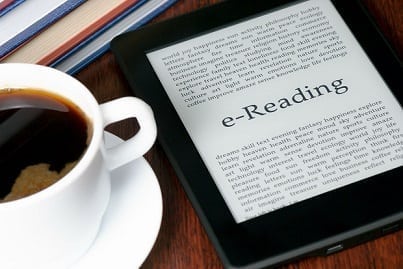 Reading Time: 3 minutes
Reading Time: 3 minutesDrafting an eBook is a great value proposition for your audience – or at least, it can be. Businesses often employ this type of content to provide readers with focused content that delves into whatever issue they are researching. This could be an evaluation of SEO trends in 2015, how to employ a new technique in a business, or explaining a new industry revelation. Simply providing an eBook, though, is not enough. Make sure your eBooks include these three elements to guarantee you get the most out of this content.
Empathize With Your Target Audience
Understanding your ideal consumer’s pain points is an essential part of the conversion process. Of course, considering these needs when you’re drafting an eBook is also helpful. For instance, if you want to attract an audience interested in SEO, address the issue from their point of view. Write the content for them, and make sure you’re tailoring it to whatever their level of familiarity with the product or service is. Don’t waste time explaining what SEO is and how it works if you’re aiming at those business owners with a moderate level of experience.
Writing Killer Headline
When a customer lands on your homepage, a killer headline is the first direction he or she will receive. In fact, 80% of visitors will read a headline, but only 20% will continue down the page. The same is true when a customer opens an eBook. Each chapter header and subheader should serve a dedicated purpose. Mediocrity won’t cut it here, so make sure your headlines are informative, give the reader direction, and let them immediately get an idea of the product or service you provide. It should:
- Feature an appropriate title. What’s the tone of your eBook? If it’s purely informative, make sure the headline content is delivered in an easy-to-understand, concise way. If you’re using humor to engage the audience, make sure it is consistent (and funny) across all headlines in the document. Whatever style you’re employing, make sure the same touch is applied throughout the copy.
- Be informative. Regardless of the tone you’ve decided to employ, the headline should let the reader understand what content he or she is about to read. Whether you’ve decided to be funny, serious, or somewhere in between, never sacrifice information for style. A reader is much more likely to tune out without a good transition into a new topic.
- Direct the reader. The point of a headline is to direct a reader to new material and ensure the content is introduced seamlessly. Write headlines with this in mind, and don’t count on the reader making sense of it on his or her own. Use headlines like you would transitions between paragraphs, and push the audience to keep reading.
Calls to Action
Include CTAs in your eBook to push readers further down the sales funnel. Understand the value proposition you provide readers: in exchange for this information, refer them to a product or service you provide that targets their pain-points. Beyond the information presented in the eBook, this gives consumers additional value. It refers them to a solution to whatever problem turned them to your content in the first place. Failing to include an effective CTA can be the difference between closing a deal and piquing a customer’s interest, only to have them look somewhere else for a final solution.




